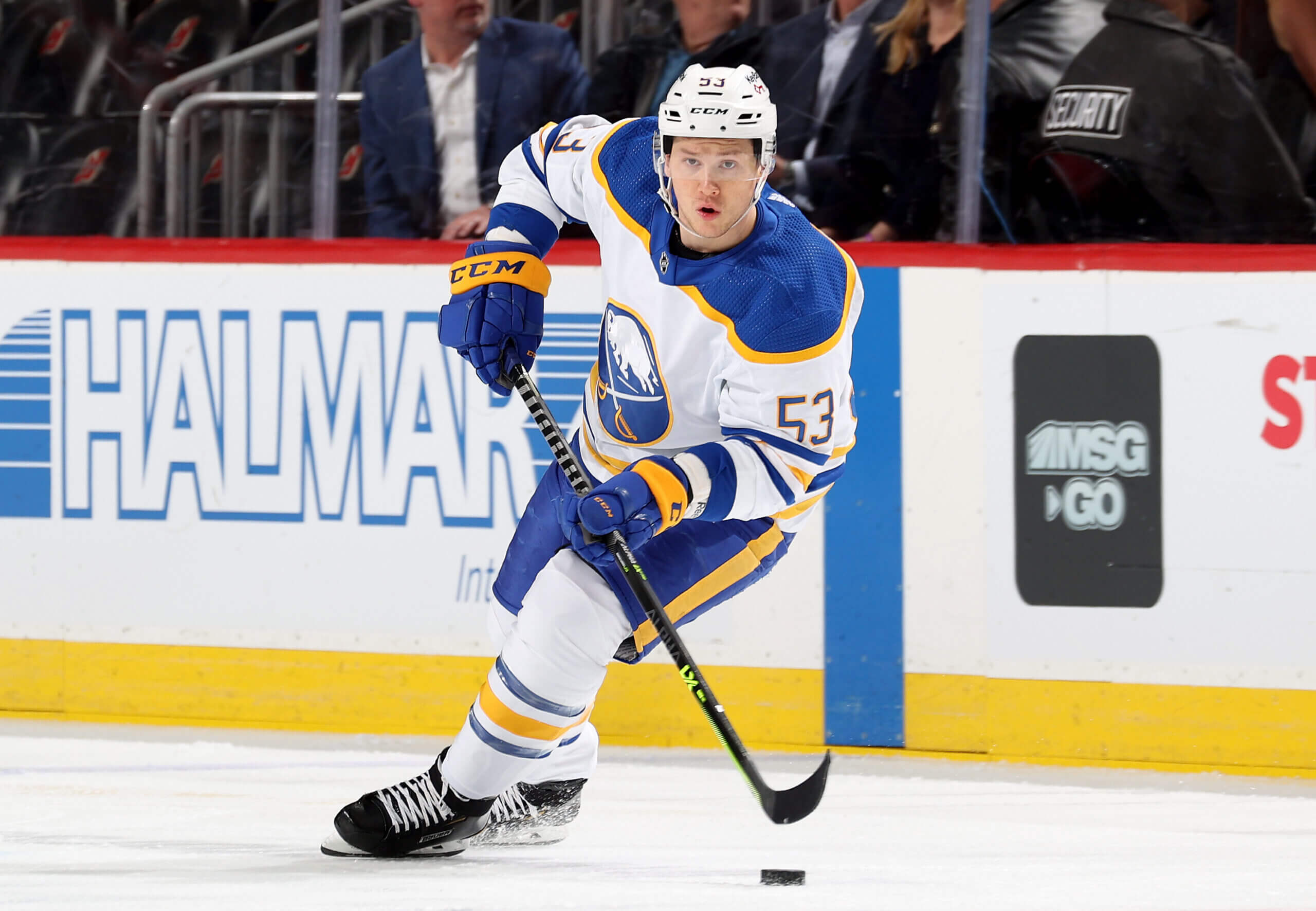LAS VEGAS — The Buffalo Sabres are buying out the final three years of Jeff Skinner’s contract, general manager Kevyn Adams announced after the conclusion of the NHL Draft on Saturday.
Skinner, 32, played the past six seasons with the Sabres and was five years into an eight-year, $72 million contract he signed after a 40-goal season in 2018-19. Skinner followed up that 40-goal season with 21 goals in 112 games across two seasons in 2019-20 and 2020-21. He rebounded under Don Granato with 68 goals and 145 points over the next two seasons.
This past season was a disappointment, though. Like many of the Sabres’ top players, Skinner underperformed, with only 24 goals and 46 points in 74 games.
With the addition of Lindy Ruff as the team’s head coach, there has been a lot of talk about the need for the team to play better defensively. Skinner has consistently been one of Buffalo’s worst defensive forwards. His $9 million cap hit has never been team-friendly, but given his age and decrease in production, Skinner’s contract became even more of a problem. He’s also taking up a roster spot as the Sabres try to reshape their roster this offseason.
What does this mean for the Sabres?
By buying out Skinner, the Sabres need to pay him two-thirds of his remaining salary spread out over the next six seasons. The way that breaks down is the Sabres will have a cap hit of $1.44 million in 2024-25, $4.44 million in 2025-26, $6.44 million in 2026-27 and $2.4 million in 2027-28, 2028-29 and 2029-30. The final three seasons of that will be a net loss, but the Sabres will have a net savings of $7.55 million this season, followed by $4.55 million in 2025-26 and $2.55 million in 2026-27.
The Sabres will also get cash savings by only needing to pay two-thirds of Skinner’s salary. But they haven’t yet been able to add another top-six forward, so trading Skinner creates another hole in the lineup. Adams now has a lot of work to do in the next week to rebuild this forward group in Ruff’s image.
Why didn’t the Sabres trade Skinner?
Skinner’s contract included a full no-movement clause, so he would have needed to approve of any trade. Adams said this week that Skinner was unwilling to waive his no-movement clause. His $9 million cap hit made him difficult to trade anyway. Even if the Sabres retained half of Skinner’s salary, a $4.5 million salary still might have been difficult to trade without attaching an additional asset to the deal.
What will the market be for Skinner?
Now that he’s a free agent and can sign for a more reasonable salary, Skinner should be a more attractive option for teams looking for scoring help. He’s not a consistent forechecker and has never been a strong contributor in the defensive zone, but he’s still capable of producing points when surrounded by the right linemates.
(Photo: Elsa / Getty Images)

